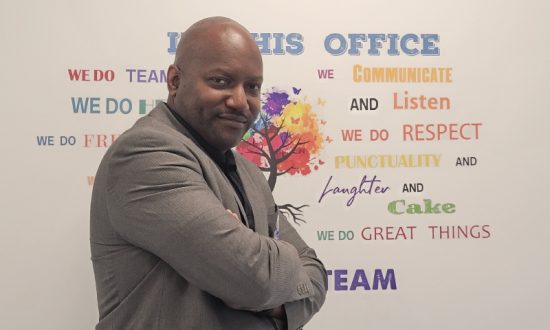Dr. Heru Keonté is a middle school principal, serving students in an urban district located in Northern New Jersey. A product of public-school education, he is passionate about elevating the scholarship, creativity and ardor of his students and staff members. Heru previously worked as a middle school language arts teacher for thirteen years before becoming an administrator. He incorporates team work, community service and an open-minded mentality into his instructional leadership.
We don’t have enough quality teachers to facilitate our students. In classrooms across the country, particularly in our larger cities, there is teacher shortage that continues to fester. Many students that were already lagging in proficiency haven’t had quality instruction since before the pandemic began. Now, with overcrowded classrooms, inept substitute teachers and overwhelmed professionals, there is little evidence that millions of students will ever make up for lost time.
An overhaul in the pay scale for public school teachers is long overdue. For decades, even centuries, society has convinced educators that one doesn’t come into this profession expecting economic prosperity. Despite education being the bedrock of any advanced nation, government bureaucracy has stifled the elevation of the profession to the prestigious status it so greatly deserves. The medical field, law enforcement, science and engineering are all examples of careers that are touted and celebrated in society while education fails to gain such allure. All professions begin with schooling. For too long, society as a whole has taken school teachers for granted. Fortunately for these underappreciated frontline-workers, those days may be coming to an end. Because of the pandemic, the increasing shortage of public-school teachers has only been exacerbated. In order to spark significant interest in teaching, major pay increases have to happen.
Nationwide, an estimated 37,000 teaching positions are currently vacant. If you include noninstructional employees such as bus drivers, counselors and extracurricular instructors, the number is significantly higher. So why is there such a teacher shortage? Is it strictly because of the lack of adequate compensation? Even before the COVID-19 pandemic, there were a number of targets where the finger could be pointed. Never ending changes to policies and requirements combined with picket lines for extra pennies has made the prospect of becoming a teacher unattractive. For years, the enrollment numbers for education majors at colleges and universities has been in decline. Many students see no value in spending years and thousands of dollars on degrees only to embark upon a profession that will never get them out of student loan debt.
Now, many districts, particularly in urban areas are scrambling to recruit the best available talent. Bidding wars for teachers mirror big city housing markets. The talented are going with the highest bidder, oftentimes leaving previous schools with looming vacancies. In the end, our students are the ones who suffer. After years of covid uncertainty and subpar lessons, millions of students struggle to reach grade level proficiency. Overworked teachers either resign, retire or provide perfunctory lessons lacking innovation and rigor. As this downward spiral continues, administrators and policymakers are searching for solutions.
One classic solution to industry shortfall is to go global. America doesn’t have a patent on quality education. If we begin to recruit talent from around the world, we may see an increase of enrichment in the classroom. There are literally millions of hardworking instructors worldwide looking for the opportunity to prosper. As long as they are qualified, the international community should be considered an option.
Furthermore, administrators have to remember they are educators. The belief that principals and supervisors can remain secluded from the classroom in an already top-heavy system is outdated. Having administrators teach lessons, whether there is a shortage or not, is a benefit to all concerned. It allows them first hand insight to the needs and potentials within the classroom. It intensifies the debate for higher wages for classroom teachers and promotes strong camaraderie and teamwork.
Teacher shortages occur when personal interests don’t meet public demand. If education becomes a lucrative endeavor, specifically in the classroom, you will see an influx in quality and adequate instruction. Where education thrives, so goes the society that cultivates it.




